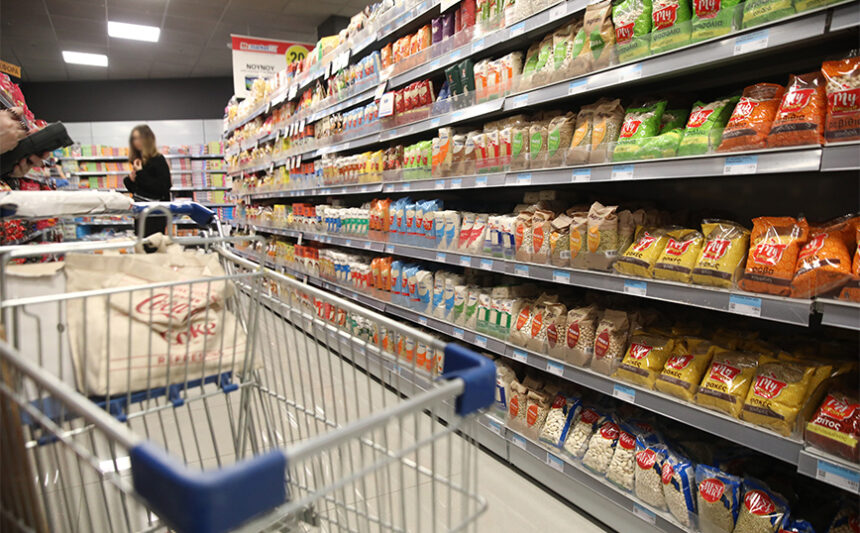In what categories of products are the largest reductions and increases recorded
1.59% increase in product prices in supermarket In March 2025, compared to March 2024, a survey of the Consumer Retail Research Institute (IELKA). Also, a total of the rolling 12 months (April 2024-March 2025) is down 0.27%, while in the first quarter of 2025 an increase of 0.76%.
It is noted that prices in March 2025 compared to the previous month, February 2025, are reduced by 0.19%. The increasing trend recorded in March 2025 compared to March last year, despite the reduction of the index, is due to the low comparison of the previous year, according to IELKA.
Higher price reductions in 12 months are recorded in the categories: Detergents and cleaning items (-5.66%), pet foods and items (-3.65%), grocery food (-2.58%), stationery, cosmetics and personal hygiene (-1.99%), ready meals (-0.31%).
According to IELKA, the reductions recorded are the result of market normalization after the pandemic and reduction in producer prices in some products.
Larger increases in 12 months are recorded in the categories: Biscuits, chocolates, sugar (+12.20%), appetizers, alpine and other served species (+6.96%), fresh fish and seafood (+5.99%), breakfast items and beverages (+5.77%), fresh meat (+5.67%). It is noted that the international prices of cocoa and coffee certainly affect the categories of sweets and drinks, as well as the category of breakfast species, which includes many chocolate species. In terms of seafood increases, it is the result of pronunciation and demand, with open seabing and fish farming sufficient to meet demand. Compared to fresh meats, this is an expected development due to a decrease in animal capital in 2024, due to animal diseases in most areas of the province. The largest reductions were recorded in detergents and cleaning items, pet foods and grocery foods due to the price decline in olive oil. Of the 23 categories of 5, 5 were reduced, 16 increase and two were unchanged.
According to IELKA, the reasons for which the tendency of broader product prices in the supermarket prices are attributed are:
– Defense inflation. Prices have been restrained in the last twelve months in large grocery stores due to large volumes of products that are moving, economies of scale, their organizational technological readiness and private label products.
– The course of raw material prices in recent months in international markets and market normalization. International raw food indicators (eg FAO FOOD PRICE INDEX) record an increase in the mid -2024 in most cases. In cases such as coffee and cocoa, however, the effect is more intense.
– Government institutional interventions. Supermarket chains operate in a strict institutional framework (eg prohibition of promotions in the event of ratings 6969/2024). In March, the new Code of Conduct for Promotions is implemented.
– Offers and discounts. Offers and discounts on the organized retailement channel are more in number, in intensity and percentage discounts, which affects the final prices of the products.
– High traffic speed. Price retaining appears much faster in large points of sale due to higher stock speeds. That is, they move their stock faster and soon make new markets to replenish stocks.
– Influence of private label products. Private label sales shares are larger in large supermarket chains due to a widest range of code, and over the last two years they have been increasing.







